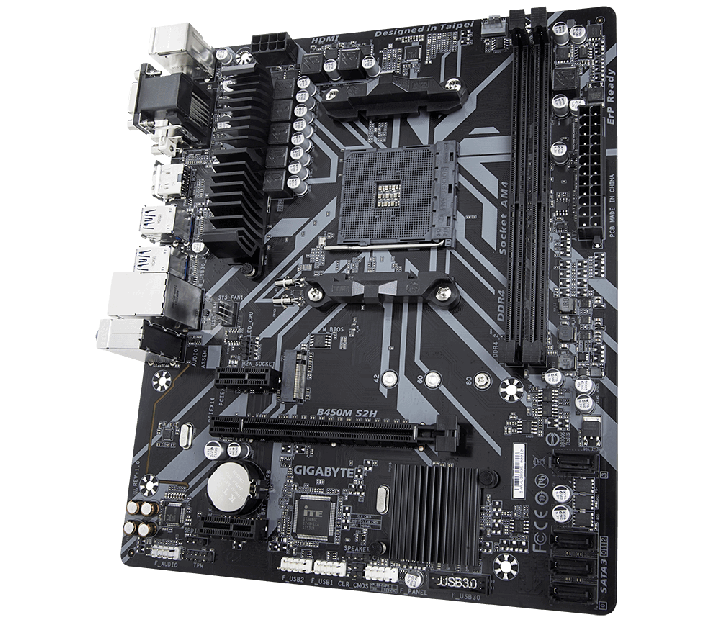
Released in June 2009, revision 4.0 of the ACPI specification added various new features to the design most notable are the USB 3.0 support, logical processor idling support, and x2APIC support. In September 2004, revision 3.0 was released, bringing to the ACPI specification support for SATA interfaces, PCI Express bus, multiprocessor support for more than 256 processors, ambient light sensors and user-presence devices, as well as extending the thermal model beyond the previous processor-centric support. It was not until August 2000 that ACPI received 64-bit address support as well as support for multiprocessor workstations and servers with revision 2.0. The first revision of the ACPI specification was released in December 1996, supporting 16, 24 and 32-bit addressing spaces.
ACPI X64 BASED PC MOTHERBOARD MAX RAM CODE
The ACPICA code is used by Linux, Haiku, ArcaOS and FreeBSD, which supplement it with their operating-system specific code. The ACPI Component Architecture ( ACPICA), mainly written by Intel's engineers, provides an open-source platform-independent reference implementation of the operating system–related ACPI code. In 2014, Mark Shuttleworth, founder of the Ubuntu Linux distribution, compared ACPI with Trojan horses.
ACPI X64 BASED PC MOTHERBOARD MAX RAM FULL
In 2001, other senior Linux software developers like Alan Cox expressed concerns about the requirements that bytecode from an external source must be run by the kernel with full privileges, as well as the overall complexity of the ACPI specification. In November 2003, Linus Torvalds-author of the Linux kernel-described ACPI as "a complete design disaster in every way". Overall design decision was not without criticism. At the BIOS development time, AML bytecode is compiled from the ASL (ACPI Source Language) code. A reference AML interpreter implementation is provided by the ACPI Component Architecture (ACPICA). To make use of the ACPI tables, the operating system must have an interpreter for the AML bytecode. Many of the firmware ACPI functionality is provided in bytecode of ACPI Machine Language (AML), a Turing-complete, domain-specific low-level language, stored in the ACPI tables. The ACPI BIOS generates ACPI tables and loads ACPI tables into main memory. The firmware-level ACPI has three main components: the ACPI tables, the ACPI BIOS, and the ACPI registers.
.png)

The UEFI Forum published the latest version of the standard, "Revision 6.4", in end of January 2021. In October 2013, ACPI Special Interest Group (ACPI SIG), the original developers of the ACPI standard, agreed to transfer all assets to the UEFI Forum, in which all future development will take place.
.png)
Intel, Microsoft and Toshiba originally developed the standard, while HP, Huawei and Phoenix also participated later. ACPI then executes the desired operations written in ACPI Machine Language (such as the initialization of hardware components) using an embedded minimal virtual machine.

Internally, ACPI advertises the available components and their functions to the operating system kernel using instruction lists (" methods") provided through the system firmware ( UEFI or BIOS), which the kernel parses. BIOS, UEFI), the computer hardware components, and the operating systems. ACPI defines hardware abstraction interfaces between the devices firmware (e.g. The specification is central to the Operating System-directed configuration and Power Management ( OSPM) system. ACPI brings power management under the control of the operating system, as opposed to the previous BIOS-centric system that relied on platform-specific firmware to determine power management and configuration policies. First released in December 1996, ACPI aims to replace Advanced Power Management (APM), the MultiProcessor Specification, and the Plug and Play BIOS (PnP) Specification. Plug and Play and hot swapping, and to perform status monitoring. putting unused hardware components to sleep, to perform auto configuration e.g. In a computer, the Advanced Configuration and Power Interface ( ACPI) provides an open standard that operating systems can use to discover and configure computer hardware components, to perform power management e.g. Example of ACPI tables of a Lenovo laptop.


 0 kommentar(er)
0 kommentar(er)
